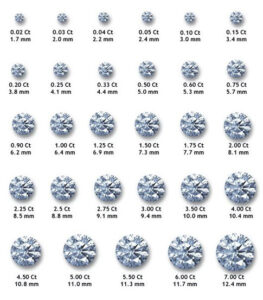Evaluating Diamond Quality
Knowing the Four Cs of diamond quality is essential for navigating the diamond industry. However, choosing the right Cs to focus on can be tricky. It’s important to understand how each C relates to a diamond’s quality and grade. There are a few things to consider before making a purchase.
One of the most important Cs of diamond quality is the cut. It affects the brilliance and luster of a diamond. A well-cut diamond will reflect light well. However, it should be remembered that diamonds are not cut equally. Cut is one of the four Cs that most affect the diamond’s brilliance.
While these are the most important Cs, color and clarity are equally important. However, most diamond industry professionals regard cut as the most important of the four Cs, as it has the most effect on sparkle and luster of a diamond. Although color and clarity are not directly related, they do play a crucial role in a diamond’s value and beauty.
A diamond’s cut determines how brilliant a diamond is to the naked eye. A poor cut results in less light entering the diamond’s crown and sides. A good cut also makes a diamond look larger and is less likely to show blemishes or inclusions.
The next C is carat. The carat refers to the weight of the diamond. A one-carat diamond weighs approximately 0.2 grams. A two-carat diamond will be much more expensive than a one-carat diamond. In addition, no two the 4 c’s of diamonds are the same.

The Four Cs – Evaluating Diamond Quality
While the cuts of round and princess cuts are often given cut grades, fancy-shaped diamonds do not. Diamonds are graded in accordance with the GIA system and come in four categories: Excellent, Very Good, Fair, and Poor. While cut grade is not a direct influence on the cost, Mills recommends staying within the Excellent to Very Good range when purchasing a diamond.
Clarity refers to the purity of a diamond. Inclusions are tiny blemishes that are not visible to the naked eye. Diamonds with higher clarity are more valuable than those with inclusions. Inclusions are internal flaws and can reduce the diamond’s value by thousands of dollars.
The second most important C is color. Diamonds with the highest quality are colorless, while those with lower quality have a faint yellow tint. A diamond with a yellow hue is considered fancy and rare. Diamonds with yellow tints are less expensive. For engagement rings, colorless diamonds are preferable.
The cut is also an important factor in diamond quality. A diamond with a good cut and excellent polish will sparkle and shine. Diamond color is graded according to the GIA scale, from D to Z, where D is colorless and Z contains a slight brown or yellow tint. You can check the color of your diamond by looking at a diamond color chart. Color can vary depending on the carat weight and cut.
The clarity of a diamond is a key factor in its value. A diamond with no visible blemishes is considered flawless. Flawless diamonds are rare, but they can cost a fortune. Therefore, if price is an important factor, you should consider buying a diamond with some inclusions or blemishes.